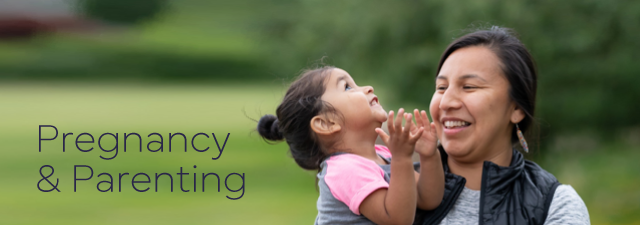Algoma Public Health
Taking Care of My Newborn
Baby Care
- We suggest washing the face and hair before undressing the baby. Newborns usually cry during their bath because they lose heat easily. As the baby matures, they eventually enjoy the bath.
- Have all the supplies ready; bathtub, washcloth, scent-free soap and shampoo, clean clothes, diaper, baby hairbrush and towel.
Bathing a Baby
- Fill your baby's bathtub with two inches of warm (not hot) water – test with wrist or elbow.
- Undress your baby, then gently place them in the bathtub once the water reaches the right temperature.
- Using the washcloth or your hand, begin washing the cleanest areas first (upper body, back, arms and legs) and wash baby’s bottom last.
- Rinse then remove baby and quickly dry off with the towel.
Washing Their Face & Head
- Start with baby’s eyes. Using only warm water on a clean corner of a washcloth, wash from the inner corner to the outer edge of the eye. Wash the other eye, using another corner of the washcloth.
- Wash your baby's face with clean water, using either a washcloth or your hand.
- Wash around baby’s nose and ears. Never insert a cotton swab into your baby's nose or ears. Doing so might damage his nasal cavity or eardrum.
- Dry their hair gently with a towel.
Washing Their Hair
- Undress baby, wrap in towel and hold them in a 'football' hold.
- Pour some warm clean water from the tap or container over baby’s scalp.
- Place a small amount of shampoo on the scalp and rub gently.
- Rinse and dry with towel.
Cord Care
- Your baby's umbilical cord will change colour from yellow/green, to brown, then to black. The cord will usually fall off 10 - 14 days after birth (may bleed slightly).
- The baby can be bathed in a tub with the cord on.
- Using a Q-tip, gently clean the area around the umbilical cord with only warm water.
- Pat the area dry or air dry.
Changing Their Diaper
- Remove excess stool using the corner of the soiled diaper.
- Use alcohol-free wipes or a washcloth and warm water to clean the area.
- Wipe from front to back.
- Do not retract the foreskin in uncircumcised baby; wash the circumcised penis with clean warm water. At birth, the foreskin of most male babies doesn't yet pull back (retract) fully. Treat the foreskin gently, being careful not to force it back.
- Tabs on the diaper open towards you when you fasten the diaper.
Nail Care
- You can use mitts to prevent the baby scratching their face.
- Use an emery board to gently file nails as they sleep..
- Do not bite off your baby’s nails, you can use nail clippers when they are older.
Keeping Your Baby Warm
- Use a hat if going outside or if the inside environment is cool.
- In newborns, large amounts of heat are lost from the head, due to its high skin surface area. Putting a hat on your baby can be a simple and effective method of reducing dry heat loss.
Crying
- There are many reasons why babies cry - try comforting them through walking, rocking, massaging, and cuddling.
- Crying starts to increase around 2 weeks, peaks around 2 months, and starts to subside by 3-4 months
How to Take an Axillary Temperature
- A normal body temperature for a newborn baby ranges from approximately 36.5oC to 37.5oC (when taken in the armpit).
- Use a digital thermometer.
- Clean the thermometer with cool, soapy water and then rinse.
- Place the tip of the thermometer in the centre of your baby's armpit.
- Tuck and hold your baby's arm snugly against her body.
- Leave the thermometer in place for about 1 minute, until you hear the "beep."
- Remove the thermometer and read the temperature.
- Clean the thermometer with cool, soapy water, then rinse, dry and store.
Toys During Bath Time
- As you care for your newborn, they are learning to recognize your touch, the sound of your voice, and the sight of your face.
- In the first few weeks you may want to introduce some simple, age-appropriate toys that appeal to the senses of sight, hearing, and touch, such as:
- Rattles
- Textured toys
- Musical toys
- Toys with contrasting colors and patterns. Strong contrasts (such as red, white, and black), curves, and symmetry stimulate an infant's developing vision. As vision improves and babies gain more control over their movements, they'll interact more and more with their environment.
- Sing to your baby, play little games during bath time.
Date Created: November, 2022










